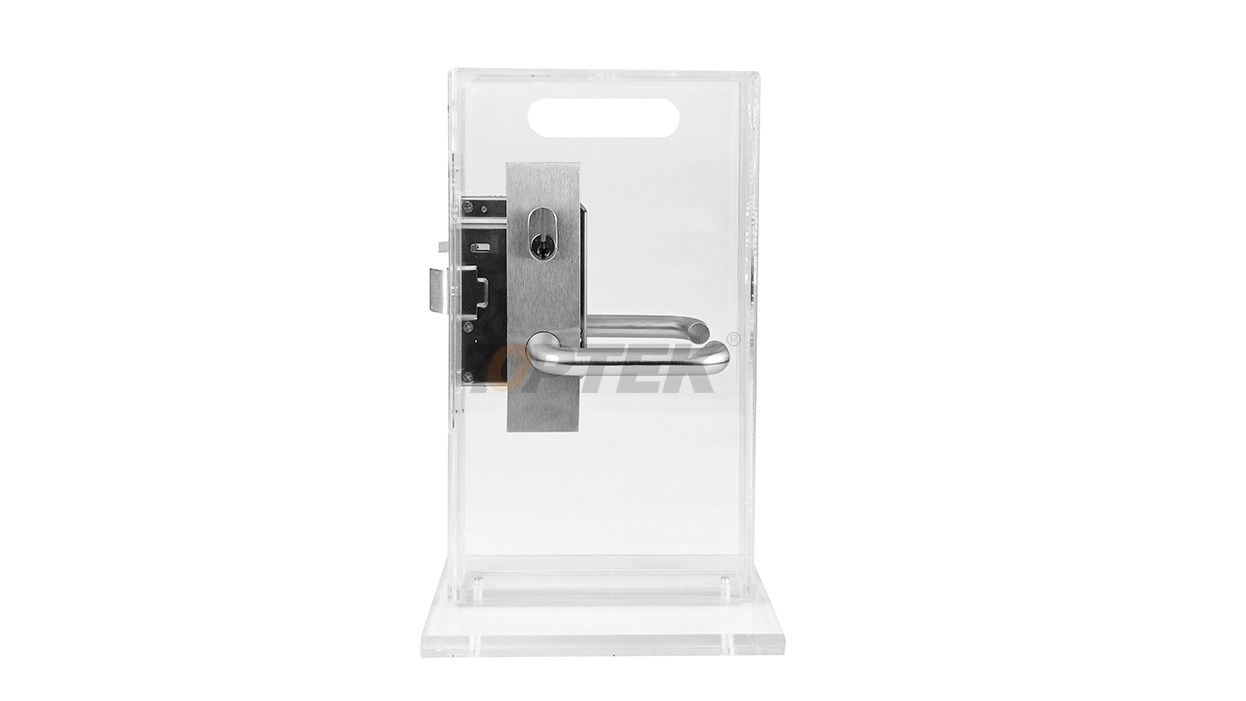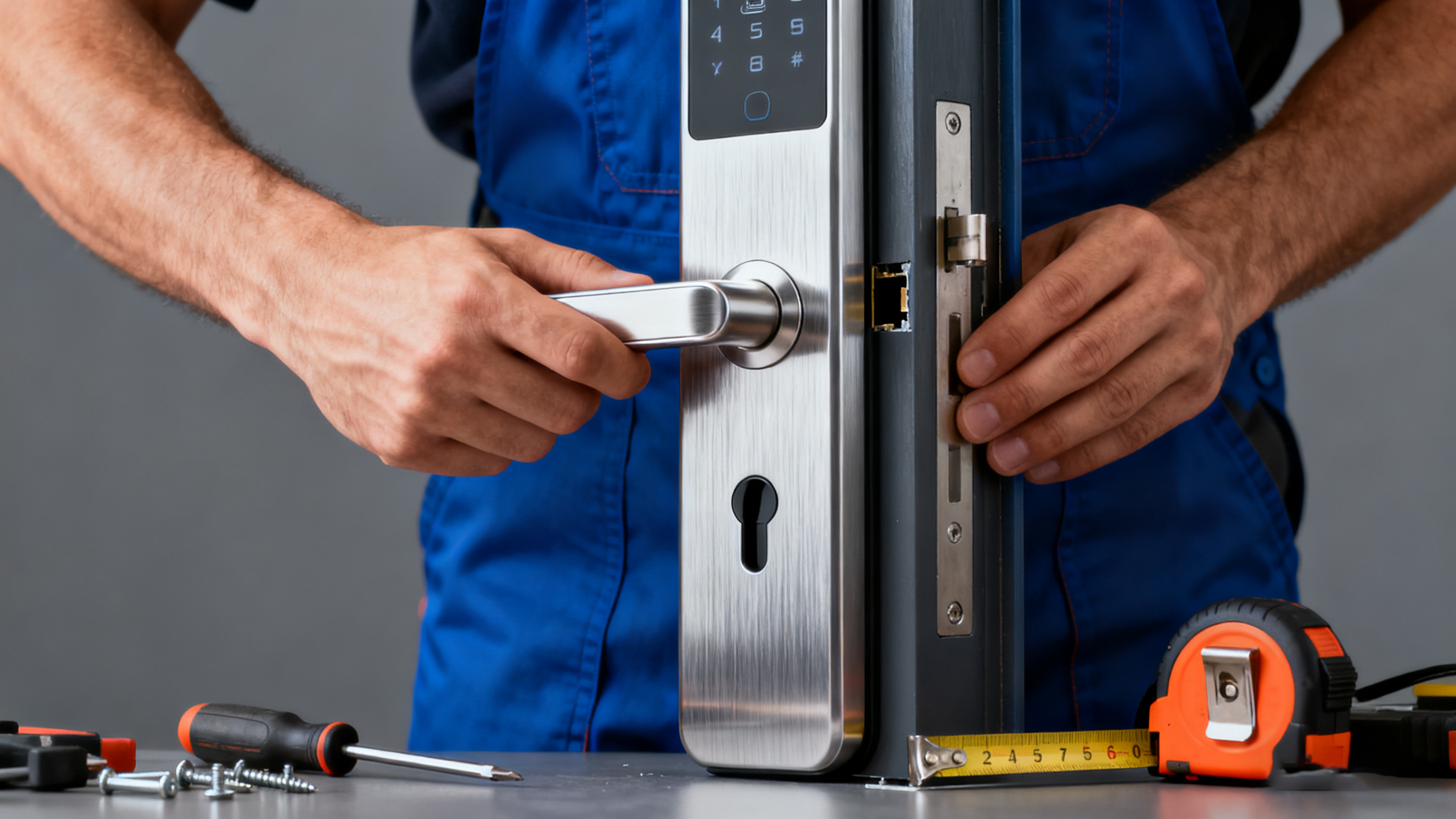When securing commercial buildings, choosing the right locks isn't just about functionality—it's about meeting strict Australian standards that ensure safety, durability, and reliability. AS certification for commercial locks represents a comprehensive testing and approval system that validates whether lock hardware meets the rigorous requirements set by Australian Standards.
Understanding AS certification becomes crucial when you're responsible for building security, compliance with building codes, or simply want assurance that your investment in commercial-grade locks will perform as expected. This certification system helps architects, building managers, and security professionals make informed decisions about lock hardware that will protect people and property for years to come.
Whether you're upgrading an existing facility or planning new construction, knowing how AS certification works can save you time, money, and potential legal headaches down the road.
Australian Standards for Commercial Locks
Australian Standards (AS) represent nationally recognized specifications that establish minimum requirements for products, processes, and services across various industries. For commercial locks, these standards ensure that hardware meets specific performance criteria under Australian conditions.
The standards cover multiple aspects of lock performance, including mechanical strength, durability testing, fire resistance, and operational reliability. Unlike voluntary guidelines, AS standards often become mandatory when referenced in building codes, construction contracts, or insurance requirements.
Commercial locks must demonstrate they can withstand the unique challenges of Australian environments, from coastal salt air to extreme temperature variations and high-usage scenarios common in busy commercial buildings.

Key AS Standards for Commercial Lock Hardware
AS 4145: Specification for Cylinder Locks
This standard establishes requirements for pin tumbler cylinder locks commonly used in commercial applications. AS 4145 covers key control, physical security levels, and operational durability. Locks meeting this standard undergo extensive testing including:
· Key insertion and withdrawal cycles (typically 100,000+ operations)
· Resistance to drilling, picking, and other attack methods
· Environmental exposure testing for corrosion resistance
· Mechanical strength testing for cylinders and housings
AS 1905: Security Doors and Frames
While primarily focused on doors and frames, AS 1905 includes critical requirements for lock hardware integration. This standard ensures that locks work properly with certified door systems and maintain security performance under various conditions.
AS 4663: Security Grading and Testing
This comprehensive standard establishes security grading systems that help users select appropriate lock hardware based on risk assessment. Different grades correspond to varying levels of protection, from basic deterrent value to high-security applications.
Fire Safety Standards
Several AS standards address how locks perform during fire emergencies, including egress requirements and smoke/fire resistance. These standards ensure that commercial locks don't compromise building evacuation procedures during emergencies.
The AS Certification Process
Obtaining AS certification requires rigorous third-party testing by accredited laboratories. The process typically involves several phases:
Design Evaluation
Engineers review technical drawings, materials specifications, and manufacturing processes to identify potential compliance issues before physical testing begins. This preliminary assessment helps manufacturers address design problems early in the development cycle.
Laboratory Testing
Certified testing facilities subject lock samples to extensive performance evaluations. Tests may run for weeks or months, simulating years of real-world usage under controlled conditions. Common test procedures include:
· Cyclic operation testing (opening/closing thousands of times)
· Environmental conditioning (temperature, humidity, salt spray exposure)
· Security attack simulation (drilling, prying, lock picking attempts)
· Installation and adjustment procedures
Documentation Review
Manufacturers must provide comprehensive documentation including installation instructions, maintenance procedures, and technical specifications. This paperwork ensures that end users can properly install and maintain the certified products.
Ongoing Surveillance
Certification doesn't end with initial approval. Regular factory inspections and periodic product testing ensure continued compliance with AS standards. Manufacturers must notify certification bodies of any design changes that might affect performance.

Benefits of AS Certified Commercial Locks
Legal Compliance
Many building codes, construction contracts, and insurance policies specifically require AS certified lock hardware. Using non-certified products can result in legal liability, insurance claim denials, or costly retrofits to achieve compliance.
Performance Assurance
Certification provides independent verification that locks will perform as advertised. Rather than relying solely on manufacturer claims, you get third-party confirmation that products meet established performance benchmarks.
Long-term Reliability
The extensive testing required for AS certification helps identify potential failure modes before products reach the market. This rigorous evaluation process typically results in more reliable, longer-lasting lock hardware.
Risk Management
For facility managers and building owners, AS certified locks help minimize security risks and operational disruptions. Certified products have proven track records of performance under Australian conditions.
Insurance Benefits
Some insurance providers offer premium reductions or coverage advantages for buildings equipped with AS certified security hardware. The reduced risk profile associated with certified products can translate into cost savings.
Choosing AS Certified Commercial Locks
Security Grade Selection
Different commercial applications require different security levels. AS 4663 provides grading systems that help match lock hardware to specific risk profiles:
· Grade 1: Basic commercial applications with low security risks
· Grade 2: Standard commercial use with moderate security requirements
· Grade 3: High-security applications requiring enhanced protection
· Grade 4: Maximum security installations with extreme protection needs
Environmental Considerations
Australian conditions vary dramatically between locations. Coastal installations need enhanced corrosion resistance, while inland areas may require temperature cycling durability. AS certification ensures locks can handle relevant environmental challenges.
Integration Requirements
Modern commercial buildings often integrate locks with access control systems, fire safety equipment, and building management systems. AS certified locks typically offer better compatibility and integration support.
Maintenance and Support
Certified manufacturers usually provide better technical support, replacement parts availability, and maintenance guidance. This ongoing support helps maximize the service life of your investment.
Common Misconceptions About AS Certification
"All Commercial Locks Are Certified"
Many lock products marketed for commercial use don't actually hold AS certification. Always verify certification status rather than assuming compliance based on marketing claims.
"Certification Guarantees Perfect Security"
AS certification establishes minimum performance standards, not absolute security guarantees. Certified locks still require proper installation, maintenance, and integration with comprehensive security strategies.
"Higher Grades Are Always Better"
While higher security grades offer enhanced protection, they also cost more and may have operational trade-offs. Grade 2 locks often provide the best balance of security, cost, and usability for typical commercial applications.
Making Your Investment Count
AS certification for commercial locks represents more than regulatory compliance—it's about making informed decisions that protect your building, occupants, and business operations. Certified locks provide independently verified performance, legal protection, and peace of mind that your security investment will deliver expected results.
When evaluating commercial lock options, request certification documentation and verify current compliance status. Work with suppliers who understand Australian standards and can provide ongoing support throughout the product lifecycle.
The upfront investment in AS certified commercial locks typically pays dividends through reduced maintenance costs, improved reliability, and enhanced security performance that stands up to real-world conditions.
AS Certification Commercial Locks
Commercial Locks
AS certified commercial locks
English
العربية
Français
Русский
Español
Português
Deutsch
italiano
日本語
한국어
Nederlands
Tiếng Việt
ไทย
Polski
Türkçe
አማርኛ
ພາສາລາວ
ភាសាខ្មែរ
Bahasa Melayu
ဗမာစာ
தமிழ்
Filipino
Bahasa Indonesia
magyar
Română
Čeština
Монгол
қазақ
Српски
हिन्दी
فارسی
Kiswahili
Slovenčina
Slovenščina
Norsk
Svenska
українська
Ελληνικά
Suomi
Հայերեն
עברית
Latine
Dansk
اردو
Shqip
বাংলা
Hrvatski
Afrikaans
Gaeilge
Eesti keel
Māori
සිංහල
नेपाली
Oʻzbekcha
latviešu
অসমীয়া
Aymara
Azərbaycan dili
Bamanankan
Euskara
Беларуская мова
भोजपुरी
Bosanski
Български
Català
Cebuano
Corsu
ދިވެހި
डोग्रिड ने दी
Esperanto
Eʋegbe
Frysk
Galego
ქართული
guarani
ગુજરાતી
Kreyòl ayisyen
Hausa
ʻŌlelo Hawaiʻi
Hmoob
íslenska
Igbo
Ilocano
Basa Jawa
ಕನ್ನಡ
Kinyarwanda
गोंगेन हें नांव
Krio we dɛn kɔl Krio
Kurdî
Kurdî
Кыргызча
Lingala
Lietuvių
Oluganda
Lëtzebuergesch
Македонски
मैथिली
Malagasy
മലയാളം
Malti
मराठी
ꯃꯦꯇꯥꯏ (ꯃꯅꯤꯄꯨꯔꯤ) ꯴.
Mizo tawng
Chichewa
ଓଡ଼ିଆ
Afaan Oromoo
پښتو
ਪੰਜਾਬੀ
Runasimi
Gagana Samoa
संस्कृत
Gaelo Albannach
Sepeti
Sesotho
chiShona
سنڌي
Soomaali
Basa Sunda
Wikang Tagalog
Тоҷикӣ
Татарча
తెలుగు
ትግንያውያን
Xitsonga
Türkmençe
संस्कृत
ئۇيغۇرچە
Cymraeg
isiXhosa
ייִדיש
Yorùbá
isiZulu







































